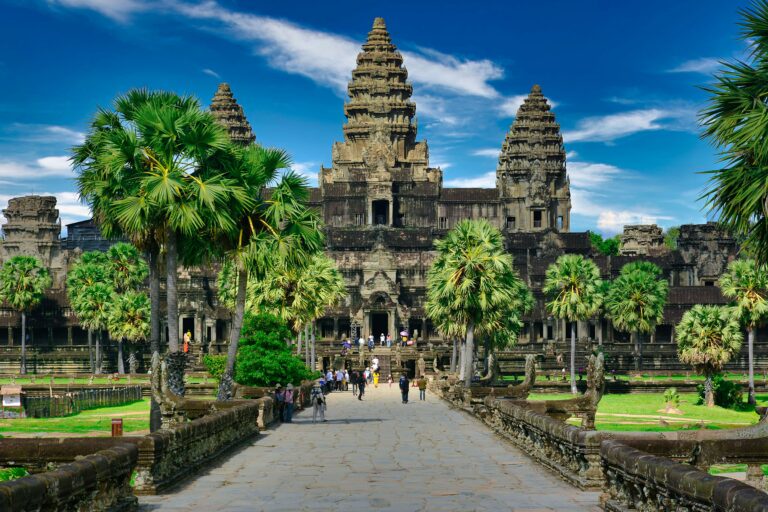
Ancient cities have a way of capturing the imagination of the modern-day adventurer. After all, what could be more exciting than walking the same streets as the warriors, artists, philosophers, and politicians who helped shape civilization as we know it? From the Greek city of Thessaloniki to Machu Picchu in the Peruvian Andes, many of the great cities of old continue to intrigue visitors to this day – and the same is true of Cambodia’s Angkor Wat, a UNESCO World Heritage Site and the largest religious complex on earth.
Nicknamed the “City of Temples,” Angkor Wat is not truly a city, but rather a temple complex built within the greater city of Angkor, capital of the flourishing Khmer empire from the 9th to the 15th centuries. King Suryavarman II commissioned the Hindu-turned-Buddhist temple in the 12th century, and today, many consider the temple complex to be the pinnacle of Khmer architecture, with its five central towers, more than 1,800 carved apsara statues, and nearly 13,000 square feet of stunning bas-relief friezes.
But why was Angkor Wat built in the first place? What was its cultural significance at the time? What role did it play in the greater Khmer empire? Read on to learn more about Angkor Wat’s fascinating history.
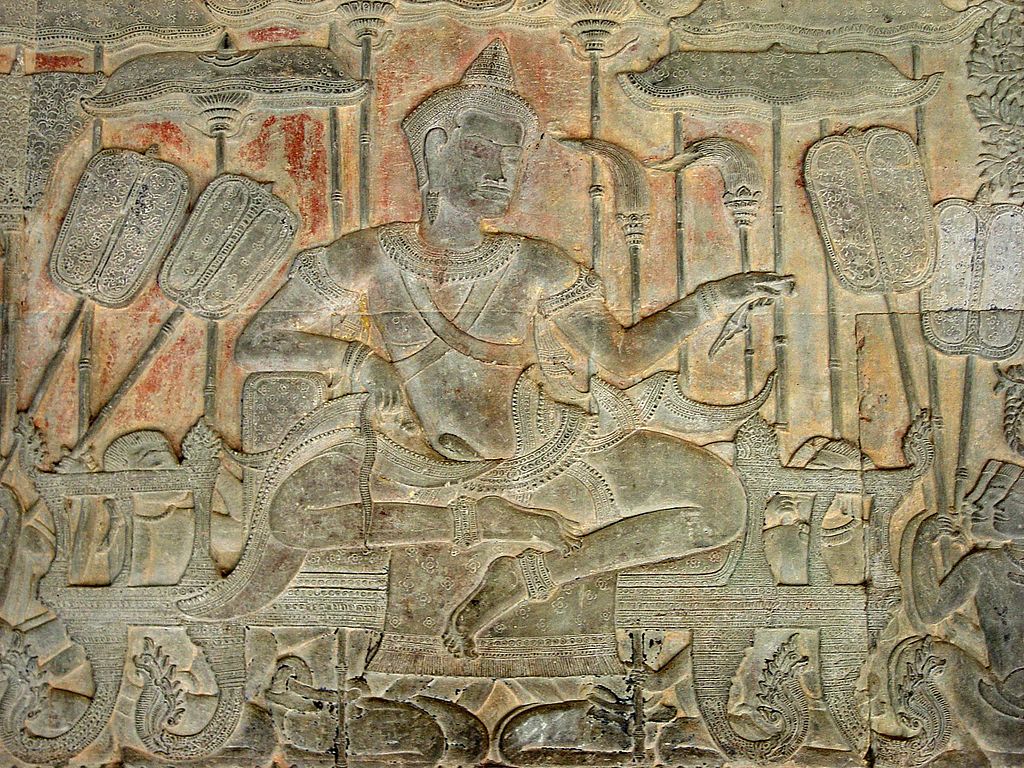
Bas-relief of King Suryavarman II in Angkor Wat’s southern gallery. Image source: Michael Gunther (CC BY-SA 4.0)
Most experts believe King Suryavarman II was born in the Khmer capital of Angkor in either 1094 or 1098 CE. And by 1113, when he was only a teenager, Suryavarman had already consolidated power and declared himself king. The young monarch ascended the throne at a time when some of his kingdom’s power was slipping away, though – a trend that Suryavarman was determined to reverse.
King Suryavarman II fancied himself both a diplomat and a conqueror, and he leaned hard into both roles to return his empire to its former glory. In the east, Suryavarman led repeated, mostly unsuccessful invasions against Champa and Đại Việt, both of which were situated in modern-day Vietnam.
It was through diplomacy, though, that Suryavarman truly shined. He was the first Khmer king in 300 years to send a diplomatic delegation to China, effectively normalizing relations with the empire’s northern neighbors. King Suryavarman II also presided over an age of great artistic and architectural gains – gains exemplified by the construction of Angkor Wat.
A devout Hindu, the King commissioned a massive temple dedicated to the Hindu god Vishnu to be built within the Khmer capital city of Angkor. Construction on what would ultimately become Angkor Wat began in 1122, and from the time the first stone was laid, it took some 50,000 workers – many of whom were slaves – nearly 30 years to make Suryavarman’s vision a reality. Unfortunately though, King Suryavarman II didn’t live long enough to enjoy the fruits of his laborers’ labor.
King Suryavarman II met his untimely demise in 1150 after an ill-fated invasion of Annam in what is today central Vietnam. A tumultuous period of weak rule and feuding followed Suryavarman’s death, eventually leading to a Champa invasion in 1177. Led by King Jaya Indravarman IV, Champa forces sailed up the Mekong and Siem Reap rivers to launch a surprise attack, sacking Angkor and executing the Khmer ruler King Tribhuvanāditya in the process.
Enter Jayavarman VII, who – despite being in his 50s at the time – led a successful campaign to retake and restore the Khmer empire, eventually achieving victory and crowning himself king in 1181. After likely repelling yet another Cham invasion early in his reign, King Jayavarman VII then dished out some payback, leading Khmer forces to invade and conquer Champa in the 1190s.
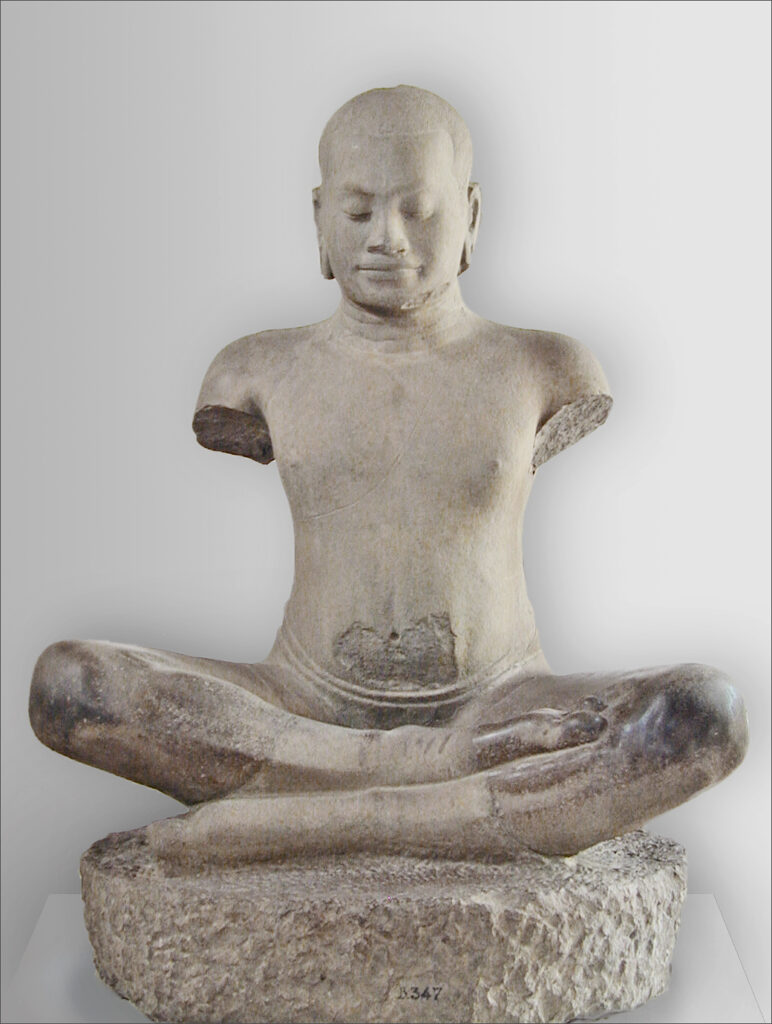
Bust of King Jayavarman VII at the National Museum of Cambodia in Phnom Penh. Image source: dalbera (CC BY 2.0)
Many experts see King Jayavarman II’s rule as a high point for the Khmer empire. As the empire’s first Buddhist king, Jayavarman slowly started replacing much of the Hindu iconography at Angkor Wat and other temples with Buddhist art.
That wasn’t the only way Buddhism played a role in his rule, though – thanks in part to his Mahayana Buddhist faith, Jayavarman was driven by the desire to alleviate the pain and suffering of his subjects. He initiated an aggressive building program that famously featured the construction of 102 hospitals and 121 rest houses, traditional Khmer dwellings built along major highways offering weary travelers some respite in the midst of a long journey.
But much like King Suryavarman II before him, King Jayavarman II’s most famous archeological project became the new centerpiece of the Khmer empire: Angkor Thom, a fortressed city-state renowned for, among other things, the stone faces that adorn its central temple’s many towers.
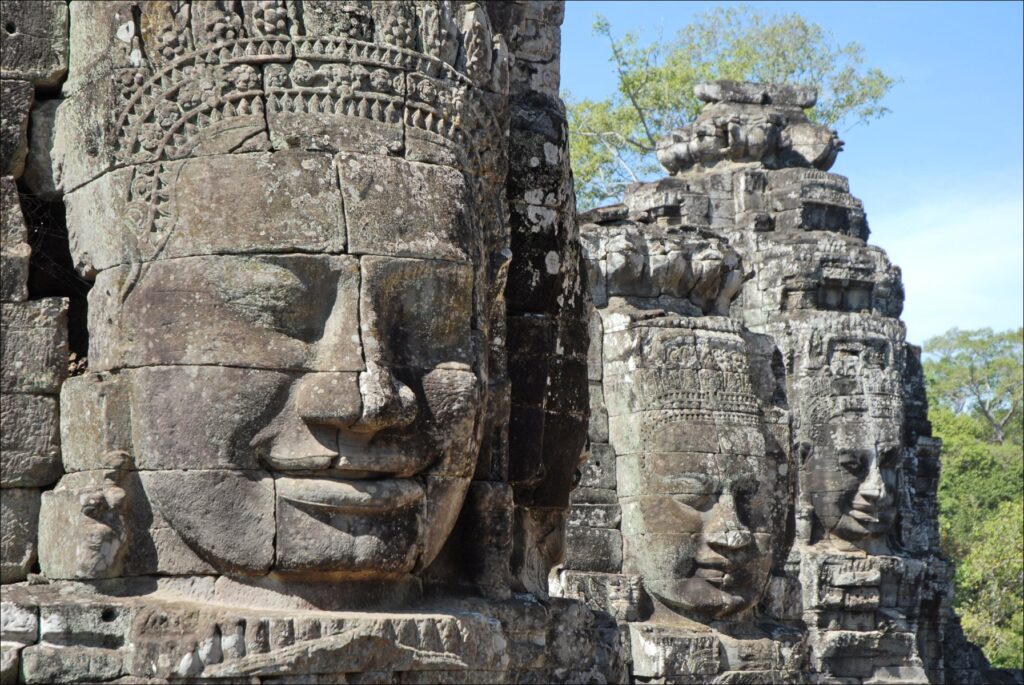
Just some of the 216 stone faces that appear on Bayon Temple at Angkor Thom. Image source: dalbera (CC BY 2.0)
Much of the Khmer empire’s history from this point on remains shrouded in mystery. In the mid-14th century though, a Thai kingdom known as the Empire of Ayutthaya rose to power in Southeast Asia, quickly becoming an enemy of the Khmer. The rival kingdoms then spent the next 80 years warring off and on, with the Ayutthaya invading in 1353 and 1370 – only to eventually be driven from Khmer lands each time.
The Ayutthaya landed one final knockout punch when, in 1431, they launched yet another devastating invasion, this time leading to a bloody three-year war. The city of Angkor was destroyed and left virtually uninhabitable and half of the city’s population was captured or killed. Survivors fled southeast to the present-day capital of Cambodia, Phnom Penh, but there was no counterattack coming – this final defeat ultimately led to the end of the Khmer empire.
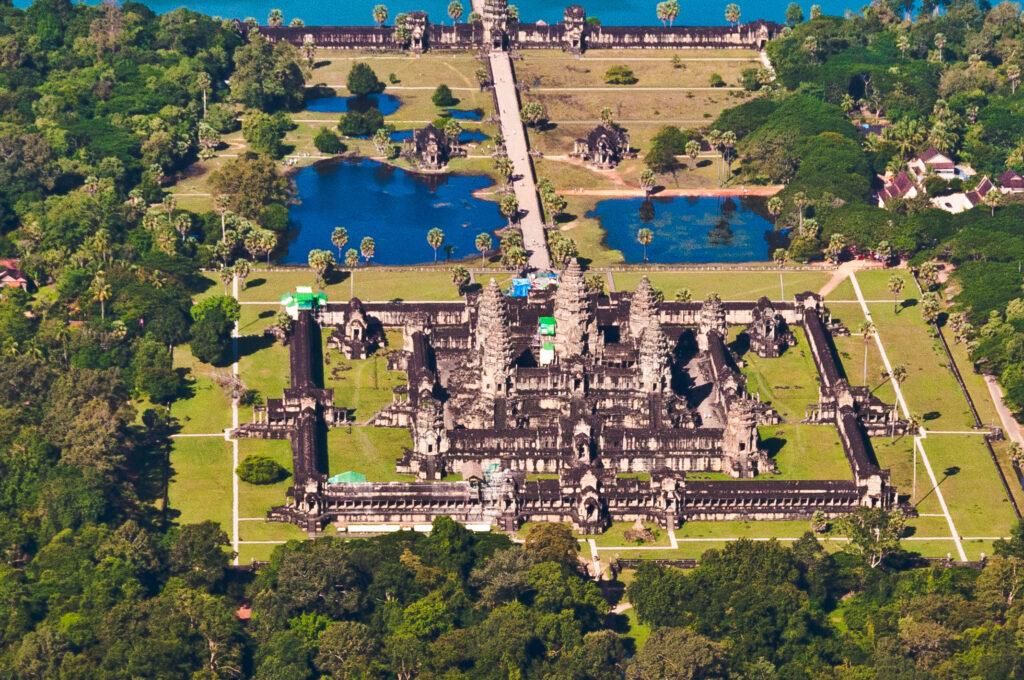
From above, Angkor Wat’s scale comes into sharp focus. Image source: Mark Fischer (CC BY-SA 2.0)
Despite the empire’s defeat suffered at the hands of the Ayutthaya, many of the most important Khmer sites – including the Angkor Wat temple complex – were never fully abandoned. There is evidence that, even after Angkor fell in the 15th century, Khmer royalty frequently returned to pay homage to their gods and ancestors, often repairing old statues and constructing new ones. Unfortunately, hardly any Khmer literature survives from the 15th or 16th centuries, so little is known about this period in Cambodian history.
What is known, though, is that Portuguese explorers discovered the city of Angkor in the Cambodian jungle in the 16th century. The city was then rediscovered in 1860 by Henri Mouhot, the French naturalist and explorer who wrote extensively about Angkor in his travel notes. Shortly after Mouhot’s discovery – and thanks in part to the stunning architectural wonder of Angkor Wat and other Khmer sites – France adopted Cambodia as a protectorate in 1863.
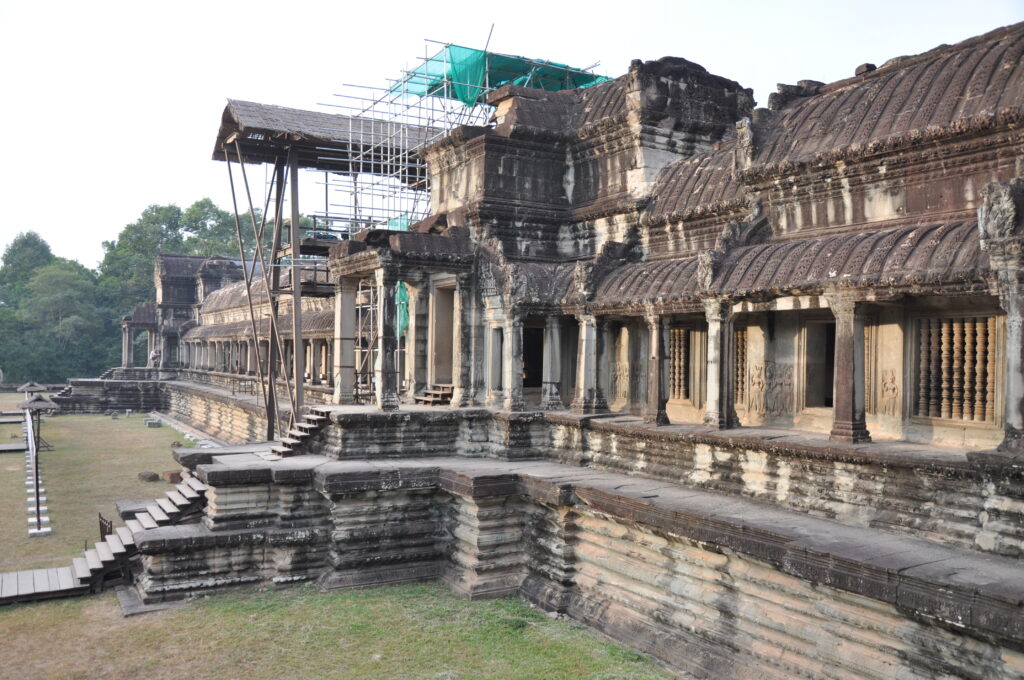
Restoration work on Angkor Wat’s second-level façade. Image source: Jorge Lascar (CC BY 2.0)
In the early 20th century, the French government launched a Herculean effort to clear plant overgrowth and restore the temple complex to its former glory. Today, Angkor Wat shines as both an important Buddhist shrine and a popular tourist attraction, drawing over one million visitors in 2024. But words fail to do Angkor Wat justice – you really have to see it with your own eyes to believe it.
Join us on our Southeast Asia Odyssey tour – or on the optional post-tour extension following Journey through Vietnam – to discover the wonders of Angkor Wat for yourself.
By using this website you are agreeing to our Cookie Policy.